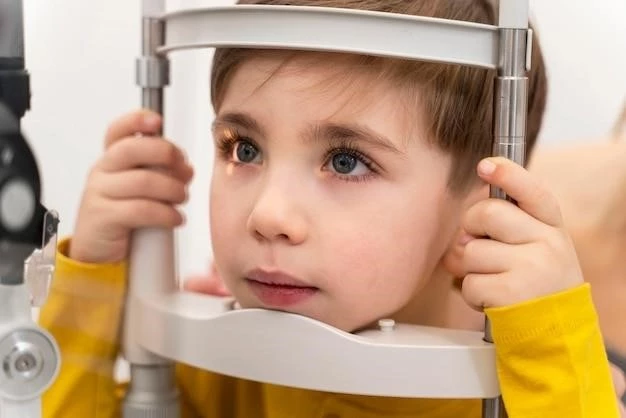Cataracts ⸺ Causes, Treatment, and Research
Explore the complex causes of Congenital Cataracts, from genetic factors to environmental influences. Discover the various treatment options available, including surgical interventions and non-invasive approaches. Stay informed about the latest research advances in cataract treatment.
Introduction to Congenital Cataracts
Congenital cataracts are clouding of the eye’s lens present at birth or developing during childhood. They can impact vision quality and clarity, affecting daily activities. It is crucial to understand the causes, treatments, and potential complications associated with congenital cataracts to ensure early detection and appropriate management. By staying informed and seeking professional guidance, individuals can navigate the journey of dealing with congenital cataracts effectively.
Causes of Congenital Cataracts
Congenital cataracts can be caused by genetic mutations, infections during pregnancy, metabolic disorders, trauma, or certain medications. Understanding the underlying cause is crucial for appropriate management. It is advisable to consult with healthcare professionals to determine the specific cause of congenital cataracts and tailor a treatment plan accordingly. By identifying and addressing the root cause, individuals can take proactive steps towards preserving their vision and overall eye health.
Treatment Options for Congenital Cataracts
When it comes to treating congenital cataracts, options may include corrective lenses, contact lenses, or surgery to remove the cloudy lens and replace it with an artificial one. The choice of treatment depends on the severity of the cataract and the individual’s overall health. Seeking guidance from eye care specialists is crucial to determine the most suitable treatment plan for congenital cataracts. Regular follow-ups post-treatment are essential to monitor progress and ensure optimal visual outcomes.
Genetics of Dominant Cataracts
Understanding the genetic factors contributing to dominant cataracts is crucial for diagnosis and management. Genetic testing can help identify specific gene mutations responsible for the condition. Consultation with a genetic counselor or ophthalmologist specializing in genetic eye disorders is recommended to assess the risk of passing on dominant cataracts to future generations. Staying informed about the genetic aspects of cataracts enables individuals to make informed decisions regarding family planning and personalized treatment approaches.
Understanding Non-Nuclear Cataracts
Non-nuclear cataracts affect different parts of the eye lens, resulting in varied symptoms and visual disturbances. These cataracts can be cortical, posterior subcapsular, or other subtypes. It is essential to recognize the specific type of non-nuclear cataract for appropriate treatment planning. Consultation with an eye care specialist is recommended to accurately diagnose and manage non-nuclear cataracts. By understanding the characteristics and implications of non-nuclear cataracts, individuals can take proactive steps towards maintaining good eye health and quality of vision.
Surgical Interventions for Cataracts
When conservative treatments are insufficient, surgical intervention becomes necessary to remove the clouded lens and restore clear vision. Common surgical techniques for cataracts include phacoemulsification and extracapsular cataract extraction. It is essential to discuss the benefits, risks, and expectations with an ophthalmologist before undergoing cataract surgery. Post-operative care and regular follow-ups are vital for ensuring optimal recovery and visual outcomes. Trusting in the expertise of qualified eye surgeons is key to successful cataract surgery and vision restoration.
Complications of Congenital Cataracts
Complications of congenital cataracts can include amblyopia (lazy eye), nystagmus, glaucoma, and refractive errors. Early detection and prompt treatment are crucial in preventing these complications and preserving vision. Regular eye examinations, especially for children, can aid in the timely identification of issues associated with congenital cataracts. Seeking comprehensive care from eye care professionals and following recommended treatment plans can help mitigate the risk of complications and ensure optimal eye health outcomes in individuals with congenital cataracts.
Prevention Strategies for Cataracts
While congenital cataracts have genetic components, adopting lifestyle habits can reduce the risk of cataracts in adulthood. Protecting your eyes from UV rays, maintaining a balanced diet rich in antioxidants, quitting smoking, and managing underlying health conditions like diabetes can help prevent cataracts. Regular eye exams are essential for early detection and intervention. By incorporating these preventive measures into your routine and prioritizing eye health, you can promote overall well-being and reduce the likelihood of developing cataracts later in life.
Research Advances in Cataract Treatment
Ongoing research in cataract treatment aims to improve surgical techniques, enhance intraocular lens technology, and explore pharmacological interventions to better manage cataracts. Innovations such as femtosecond laser-assisted cataract surgery and extended depth of focus lenses show promising results in achieving optimal visual outcomes. Staying informed about these advancements can empower individuals facing cataract treatment decisions. Consultation with specialists involved in cutting-edge research can provide insights into the latest treatment options available, offering hope for enhanced quality of life and vision for those affected by cataracts.

